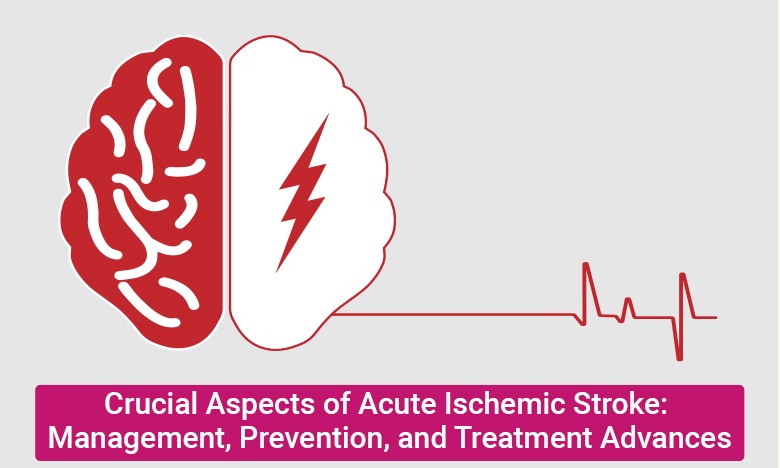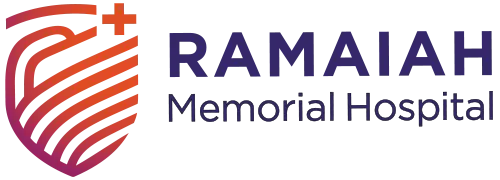Crucial Aspects of Acute Ischemic Stroke: Management, Prevention, and Treatment Advances

Brain Stroke
The brain is a wonderful and intricately designed organ with multitude of functions transcending to mindfulness and awareness. When this organ, nourished by an intricate blood vessel network supplying oxygenated blood, has a sudden blocked blood vessel- an acute ischemic stroke develops. Vast numbers of neurons, synapses, and nerve fibers are irretrievably lost every moment till treatment occurs.
Brain Attack
Stroke, simply put is a ‘brain attack’, reflexively drawing an analogy to its counterpart- heart attack. Ischemic stroke occurs when a region of the brain has been deprived of vital oxygen and nutrient supply-due to a clot in an artery supplying the brain. The adult human brain is made up of 130 billion neurons. Every 30 seconds of a sustained large artery block kills 1 million neurons and destroys 6 kilometres of carefully crafted nerve networks.
Instant Treatment Critical
The consequences of untreated stroke include varying degrees of hand and/or leg paralysis, speech impairment, affect memory, consciousness and behavioural disturbances. Strokes affecting the brainstem which regulates aspects like breathing and heart functions, could lead to coma and death.
The critical time to treat these strokes is within the first 6 hours of onset. Strokes reaching a hospital between 6 to 12 hours after, mandate advanced CT or MRI tests to help quantify the parts of the brain that can be salvaged by treatment. In patients with strokes within 6 hours of onset of symptoms, the trial compared treatment outcomes of stent device to pull out the clot (mechanical thrombectomy) versus conventional injection of clot dissolving agent into a vein. There was an overwhelming 13.5 percentage positive difference in the functional outcome of patients treated by mechanical thrombectomy. This study confidently characterised 2 eras in stroke management in large arteries supplying the brain: one before and one after the study.
How The Clot Is Removed:
The technique for clot extraction involves performing a special dye study of the arteries of the brain called cerebral angiogram using an artery in the groin as access. The clot location identified, special tubes (catheters) are used to reach the clot region and then through these micro-catheters the clot remover-stent is deployed. The stent enmeshes the clot within it and is then pulled out of the body. However, there is a limit to how far these micro-catheters can be advanced into the brain blood vessels, dictated by the size of the smaller blood vessels- here clots are still treated by clot dissolving drugs.
Western Scenario:
Special teams are set up to manage strokes with multidisciplinary involvement of trained emergency doctors, stroke neurologists, neurosurgeons and radiologists. Hospitals brought down the time from patient arrival at hospital to initiation of treatment to 1 hour from the recommended 2 hours. From a mere 30-50% chance of clot dissolution with drugs, a rate of more than 80% of clot removal success has been accepted with mechanical thrombectomy. To spread awareness, American stroke association recruited celebrities who experienced stroke and were successfully treated as brand ambassadors, placed notices at important public locations to highlight stroke symptoms and contact numbers for treatment. The acronym- ELVO (Emergent large vessel occlusion) created awareness about a treatable neurological disease. There was an all-round cheer with treatment outcomes- patients and relatives saw dramatic improvement, the insurance companies benefited as it reduced patient stay in hospital, cost of rehabilitation and ICU care.
Indian Scenario:
It was estimated that in 2015 there would have been 1.65 million new stroke cases, with 80% being ischemic strokes- one stroke case every 40 seconds. Unfortunately, only 0.5% of these patents receive the standard of care. It points to lack of awareness of symptoms of stroke among the general population, inadequate infrastructure in primary hospitals to evaluate and non-referral of such cases to comprehensive stroke treatment centres. Emergency ambulance systems for patient transfer is crucial. Chaotic traffic in our cities can be combated utilizing free source traffic apps on smartphones of ambulance personnel. Certification of hospitals as comprehensive stroke treatment centres is vital. The catheters and clot retrieval devices are not manufactured in India and are imported. A full clot retrieval system is expensive and medical device companies need to work out a pricing model in line with local affordability. Medical insurance does reimburse treatment costs – the cost benefit of an individual restored to baseline or close to it potentially outweighs the costs of nursing an untreated person for prolonged time with rehabilitation.
An increased life expectancy in India and a growing middle class has ushered in lifestyle and age-related risk factors like heart disease, diabetes, hypertension, high cholesterol and smoking. Strokes can occur in anyone and at any time. Acute ischemic stroke is a highly treatable neuro-emergency.
Dr. Sunil Furtado
Department of Neurosurgery


